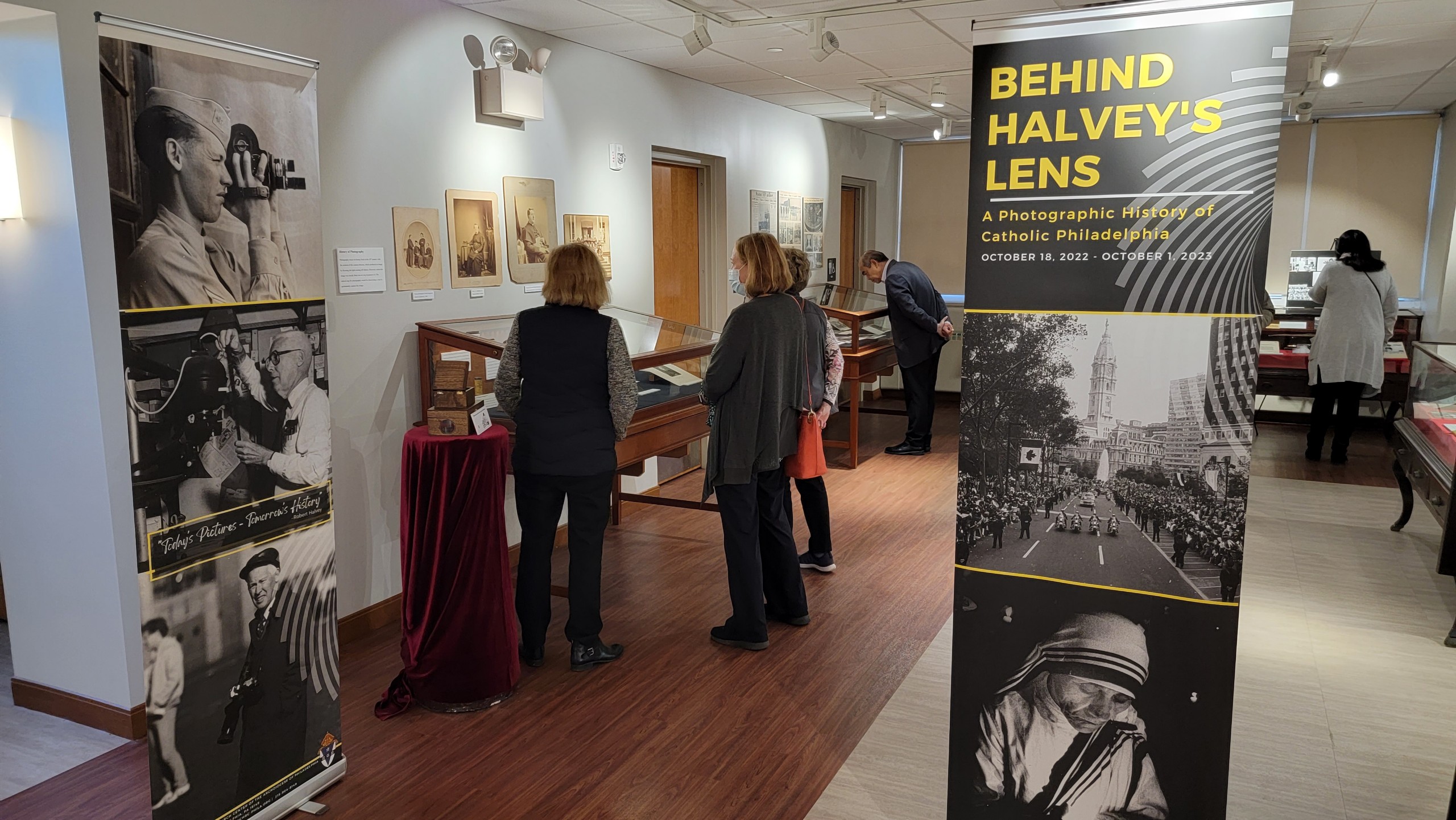“Today’s pictures – tomorrow’s history.” That motto, inscribed on the business card of Robert S. Halvey, one of the longest-tenured freelance photographers of The Catholic Standard & Times, epitomizes the work he did for almost six decades: visually documenting the history of the Catholic Church in Philadelphia.

Robert Halvey’s Graflex Pacemaker Speed Graphic, circa 1954. (Photo: Catholic Historical Research Center of the Archdiocese of Philadelphia)
“It was almost like he knew when he was taking these photos how important they would be for people later, looking back on this time period, because they are just a fantastic resource, especially the photos of the (1976) Eucharistic Congress,” said Patrick Shank, head archivist at Catholic Historical Research Center of the Archdiocese of Philadelphia. “Some of the art exhibits and art performances at the Congress weren’t recorded, so these are the only records we have of some of the events at the Congress.”
Last year Shank and the staff at the research center created an exhibit, “Behind Halvey’s Lens: A Photographic History of Catholic Philadelphia,” which features approximately 50 images from the Halvey photo archive as well as family scrapbooks and the cameras that Halvey used throughout his career.
The exhibit will remain on display at the center through next September, according to Shank.
“It was a very popular exhibit, and a lot of people really enjoyed it,” he said. “It was one of our most ambitious exhibits, so we wanted to give people another chance to come through and see it.”
In addition to showcasing Halvey’s photos, Shank explained that the exhibit highlights the history of photography and photojournalism, Halvey’s personal life, including photos from his time serving as an Army photographer in the Panama Canal during World War II.
Joseph Kirk Ryan, managing editor of The Catholic Standard & Times from 1989 to 2002, describes Halvey’s photo collection as a “treasure trove of Catholic life in Philadelphia.”
“You can’t calculate the value of it in terms of history and in terms of sociological events,” Ryan said. “The life of the Catholic Church throughout every year was in Bob’s files because he was there. Bob captured an amazing time in the life of Philadelphia.”
Ryan noted Halvey’s ability not only to capture photos of an event, but also to provide information about it and the people he photographed.
“Bob had a reporter’s eye as well as a cameraman’s eye because he paid attention to names and details of the event,” he said. “You could rely on his notes for the names of the people in the pictures.”
Halvey’s wife Theresa was instrumental in documenting and filing all the photos, negatives and contact sheets from each of his freelance assignments.

Theresa Halvey organizing photographs. (Photo: Catholic Historical Research Center of the Archdiocese of Philadelphia)
Shank said the exhibit includes photos that Halvey took of Theresa cataloging his photos because “their house was pretty much his photo archive and studio.”
“I bet there was a typed sheet in the envelopes with the negatives or contact sheets,” Ryan added. “That was their life. It was his vocation, and a lot of the photography work he did was for The Catholic Standard & Times.”
Photos that Halvey took during the 1976 Eucharistic Congress are part of the exhibit, including an award-winning photo that he captured of Mother Teresa on the Benjamin Franklin Parkway.
“He had an amazing picture of Mother Teresa visiting a woman in Philadelphia who had cancer, and that picture was engraved on the woman’s tombstone,” Ryan recalled.
Although Halvey worked as a freelance photographer for The Catholic Standard & Times, Shank estimates there are a half million photos in the Halvey archive.
The Halvey exhibit is noteworthy because it represents 60 years of Philadelphia and Catholic history, Shank said.
“It’s a really neat way to see how Catholic history changed,” he added. “In those 60 years there was so much change, from Vatican II in the 1960s, to just culturally in the 1970s, that it’s really neat to see the change from the 90s and the 40s and how they compared and contrasted.”
At the beginning of Halvey’s career with The Catholic Standard & Times in 1941, Cardinal Dennis Dougherty was the head of the Archdiocese, and when Halvey retired in 1999, Cardinal Anthony Bevilacqua was Archbishop of Philadelphia.
“As far as a Philadelphia Catholic and somebody who was dedicated to the Church in the way that he was, there couldn’t be anybody better,” Ryan said. “He was the perfect Catholic gentleman and just a wonderful guy.”
The Catholic Historical Research Center, located at 6719 Calvert Street in Philadelphia, is open Monday through Friday, 9:00 a.m.-4:00 p.m. The center is closed on holy days and holidays. The center has a small staff, so visitors who want to view the exhibit are encouraged to call 215-904-8149 or send an email to archives@chrc-phila.org to make an appointment.
“We’d love to have people see the exhibit so they can get a taste of the history of Catholic Philadelphia through all of Halvey’s hard work taking pictures over those 60 years,” Shank said.

PREVIOUS: CRS Rice Bowl Sees Largest-Ever Lenten Collection This Year
NEXT: Archdiocese Launches Website With Mental Health Resources For Area Catholics




Share this story